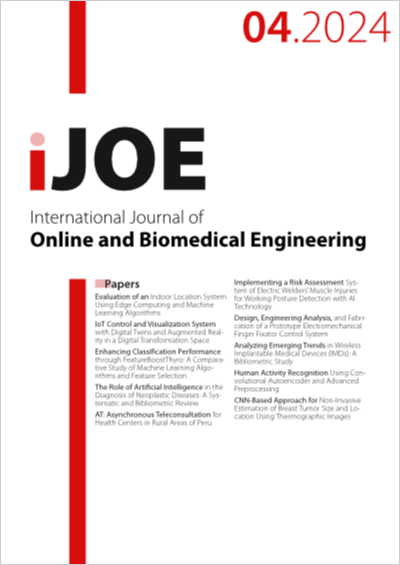Human Activity Recognition Using Convolutional Autoencoder and Advanced Preprocessing
DOI:
https://doi.org/10.3991/ijoe.v20i04.43623Keywords:
Human Activity Detection, Deep Learning, Autoencoder, UniMiB-SHARAbstract
E-health systems rely on information and communication technology to support and improve various aspects of health services, delivery, and management. The success of artificial intelligence techniques has led to the emergence of a variety of systems designed to address a wide range of healthcare issues. In particular, gathering data on patient activity and behavior has enabled the development of reliable predictive systems for detecting chronic diseases and forecasting their progression. Human activity detection is a vast and emerging field, and various datasets have been collected for training different machine learning and deep learning (DL) models. The University of Milano Bicocca smartphone-based human activity recognition (UniMiB-SHAR) dataset is widely used for analyzing and recognizing human actions, including walking, running, and other daily activities. However, the autoencoder (AE) technique trained on this dataset yields poor performance. This paper aims to enhance the performance of AEs on the challenging UniMiB-SHAR dataset by introducing a convolutional AE model and employing novel preprocessing techniques, including normalization, magnitude, principal component analysis (PCA), and balancing methods such as SMOTEEN and ADASYNE. The experimental results demonstrate that the proposed AE model achieved successful performance, surpassing the state-of-the-art methods, with accuracies of 96.56% for activities of daily living (ADL), 98.86% for Fall, and 88.47% for the full dataset.
Downloads
Published
How to Cite
Issue
Section
License
Copyright (c) 2024 CHAIMAE ZAOUI, FAOUZIA BENABBOU, ABDELAZIZ ETTAOUFIK, KHADIJA SABIRI

This work is licensed under a Creative Commons Attribution 4.0 International License.



